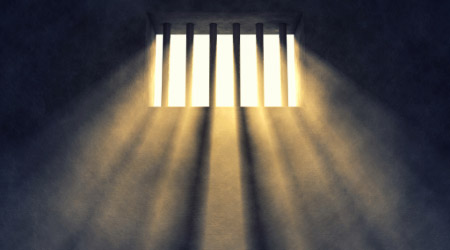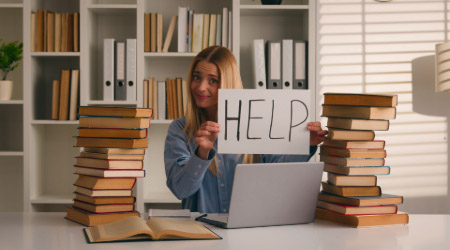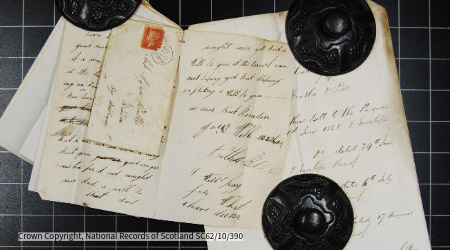Learning Zone - Visualising Your Family History
Five Ways to Find Photographs of Your Ancestors
Quick Facts
Although paper-based calotype negative and salt print processes of photography were invented by William Henry Fox Talbot and demonstrated in 1839, it was some decades before photography became commonplace. Even without photographs, it’s possible to visualise your family history and understand your heritage. There are numerous written records online that complement photographs and moving images, all of which can help you understand the lives of your ancestors more fully.
In this Learning Zone we will feature some of the most useful resources. We will highlight written records, photographs and moving images. In general, we will focus on records relating to housing, employment and living conditions but we will also show you ‘Five Ways to Find Photographs of Your Ancestors’.
Written Records
Top websites:
The Statistical Accounts of Scotland 1791-1845 - stataccscot.edina.ac.uk
Internet Archive - archive.org
Google Books - books.google.com
HathiTrust Digital Library - hathitrust.org
JSTOR - www.jstor.org (often available for free with a library membership)
British Newspaper Archive (also available on Findmypast as part of a subscription)
The Statistical Accounts of Scotland are often the first port of call as they give us an overview of the parish where our family lived. They were based largely on information supplied by each parish church minister. These are free to view online at stataccscot.edina.ac.uk.
For example, in the account for Cupar, we’re given a description of the prison: “The section for debtors isn’t too bad but the account tells us ‘very different is the state of the prison under it, known by the name of “the iron-house,” in which persons suspected thief, etc. are confined. This is a dark, damp, vaulted dungeon, composed entirely of stone, without a fire-place, or any the most wretched accommodation…” and so it continues. Although not a photograph or painting, it does give us a vivid picture of life in the Cupar prison! As there is an entry for every parish in Scotland, these are definitely the first port of call. You will be given an overview of the parish and an insight into life at the time.
There are any number of books that can help us understand how our ancestors lived and this learning zone does not attempt to list them all. Royal Commission reports are particularly useful for genealogy. The good news is that many of these are easily accessible and available for free online. These were public enquiries which covered all the major aspects of public life.
Useful Royal Commission Reports
1842 - Report on the Sanitary Condition of the Labouring Population of Great Britain (available on archive.org).
1842 - Employment and Condition of Children in Mines and Manufactories: First Report (child labour in mines) - (available on Google Books).
1842 - Employment and Condition of Children in Mines and Manufactories: Second Report (child labour in trades and manufactures) - (available on hathitrust.org) and appendix available on hathitrust.org.
1844 - Poor Law Commission (seven volumes available on hathitrust.org).
1857 - Scottish Lunacy Commission (available on wellcomecollection.org).
1865 - First Report by Her Majesty's Commissioners Appointed to Inquire into the Schools in Scotland (Argyll Commission) - (available on Google Books).
1867 - Second Report by Her Majesty's Commissioners Appointed to Inquire into the Schools in Scotland (Argyll Commission) - (available on archive.org).
1884 - Report of the Commission of Inquiry into the Condition of Crofters and Cottars in the Highlands and Islands (Napier Commission) - (available on archive.org)and five volumes of evidence presented to the commission (digitised by the University of the Highlands & Islands).
1917 - Report of the Royal Commission on the Housing of the Industrial Population in Scotland (available on archive.org).
Five Ways to Find Photographs of Your Ancestors
Family photos are a true treasure, but what if your family doesn’t have any old photographs? What can you do to find any that survive?
1. Distant Cousins
Our top tip would be to reach out to distant relatives. An easy way to do this is by reaching out to people who have an online tree. As they have already started researching, they obviously have an interest in their family history. Don’t presume they have added all their photos to an online tree. We have noticed that families who left Scotland seem to have kept more mementoes of home. If your ancestor remained here in Scotland, her sister, who went to Canada, may have taken photos with her. Reach out to your distant cousins.
2. Newspapers
For the early 20th century, it’s worth searching newspapers as you will find photos of weddings and other major events. During the First World War, the Glasgow Evening Times printed short biographies of service personnel who were reported missing, wounded or killed. This covers people from Glasgow and the surrounding area. A free index is available on www.glasgowfamilyhistory.org.uk. Many of these entries include a photograph.
We’ve found photos of some people who were bridesmaids at a friend’s wedding, often referred to as ‘Miss Maxwell’, or similar. Narrow down your search to an area but look out for entries not directly related to your ancestors. This is easier when your ancestors didn’t have a common name! The newspaper search on the British Newspaper Archive or Findmypast is really helpful.
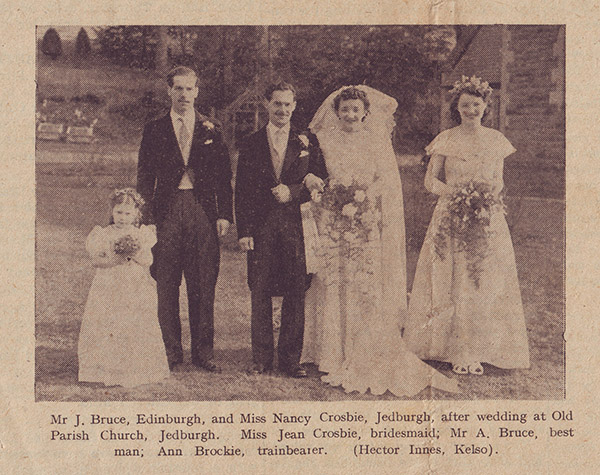
3. Archives
From time to time, a photograph of our ancestor may end up in a local or national archive. Remember that a catalogue is not the same as a name index. We’re very used to searching online where records are indexed by person and you can usually search by forename and surname. An archive catalogue is arranged by item, not person. This means you may need a bit of patience. For example, a school photo may be catalogued under the name of the school rather than the names of the children. A street scene may show your ancestor standing outside his shop. His name may not appear in the catalogue although the name of his shop might.
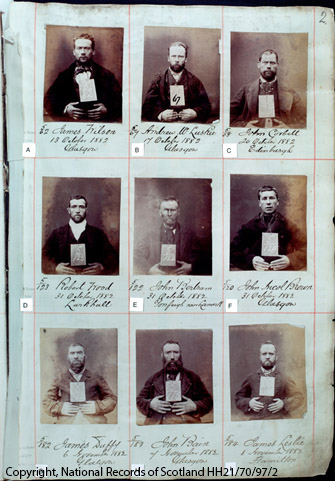
4. Postcards
‘Answers on a postcard, please.’ We don’t say that anymore! Postcards were used extensively for many years and for all sorts of purposes. For us, as family historians, the picture-postcard is perhaps the most significant and many of these can be purchased online very cheaply. As well as general street scenes, which are interesting, we also find individual people, like the example shown here, ‘John Houston, the Kirkcudbright Weather Prophet’. Individuals could also have their own photo printed on a postcard and these sometimes come up for sale online. The other example here is one from our own family collection, sent from Bella Rae to Graham’s great-grandmother, ‘Mrs. Elliot’ in 1910. This is a photo of Bella but has survived with our family. It’s not unusual to see these coming up in online auctions. We had to do a bit of digging to find out who ‘Bella’ of ‘Dalveen, Hawick’ was but now that we have identified Bella, we hope to be able to contact one of her descendants or relatives.


5. Oil Paintings
Although most of us will not find an oil painting of our ancestors, some people will find such a treasure and actually, there is something for all of us. Art UK is the online home for every public art collection in the UK. You can access high-quality digital images of artwork from over 3,300 British institutions. Within this collection, you will find portraits of ‘Lady Margaret Hay (c.1657–1753), Countess of Roxburghe’, ‘Mrs J. J. Bell-Irving and her Daughters’ and many portraits of artists and their families.
Although it may not be possible to find a photograph of all of our ancestors, we may be able to find a photograph of the house they lived in or the factory where they worked. Here are some useful websites:
Dumfries and Galloway Libraries online photographic collection - www.viewdumfriesandgalloway.co.uk
EdinPhoto - edinphoto.org.uk
The Silver City Vault, the online collections of Aberdeen Local Studies - silvercityvault.org.uk
Am Baile is a digital archive of the history and culture of the Scottish Highlands and Islands - www.ambaile.org.uk
Thomas Annan’s photographs of Glasgow - digital.nls.uk/learning/thomas-annan-glasgow
Moving Images
The National Library of Scotland has an online catalogue of their collection of moving images. Some of their collection is online and it is possible to filter your results to view only films available remotely.
In general, it’s best to search by place, occupation or another topic. You will be able to watch royal visits to factories, the opening of public buildings, local festivals, documentaries and some private films. There are also recordings of traditional Scottish songs.
Moving Image Archive from National Library of Scotland - movingimage.nls.uk
Pathé was founded in 1896, then in 1908 they invented the newsreel that was shown in cinemas before a feature film. They have been adding these newsreels to their website britishpathe.com. On their website we will find news reports from the towns where we lived, we may be able to find footage of the street where our ancestors lived.
Pathé News - www.britishpathe.com

